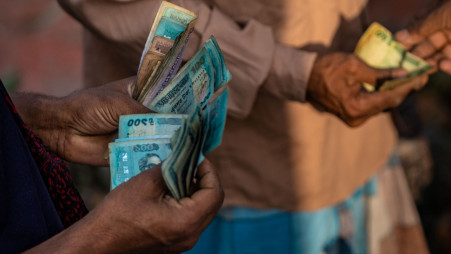In the year to June this year, deposits in rural regions grew by Tk4,833 crore or 14.8%. In contrast, loans disbursed in those areas rose by just Tk80 crore or 1.2%.
Representational image. Photo: TBS
“>

Representational image. Photo: TBS
Large amounts of deposits are collected from rural areas through agent banking, but when it comes to lending, banks are channelling most of the money into urban centres, leaving rural borrowers with limited access to credit.
In the year to June this year, deposits in rural regions grew by Tk4,833 crore or 14.8%. In contrast, loans disbursed in those areas rose by just Tk80 crore or 1.2%, an analysis of Bangladesh Bank’s June report on agent banking found.
As of June this year, outstanding rural deposits stood at Tk37,487 crore, while loans disbursed amounted to only Tk6,656 crore.
But the picture is very different in urban areas. Over the same 12-month period, deposits there grew by only Tk651 crore, but loans jumped by Tk1,381 crore – more than double the growth in deposits.
Year-on-year, urban loan growth reached 54%, which is about 45 times higher than the growth rate of loans in rural areas.
As of June, urban agent banking deposits stood at Tk7,810 crore, while loan outstanding amounted to Tk5,523 crore.
Why rural borrowers rely less on banks
However, bankers say the imbalance stems more from rural people’s preference for easy banking methods than from a lack of loan opportunities.
Explaining the disparity, Syed Mahbubur Rahman, managing director and CEO of Mutual Trust Bank, told The Business Standard, “It is normal for banks to get more deposits from rural areas. But the tendency among rural residents to take loans from banks is low. This is because bank loans require a lot of documentation and approval takes time.”
“Even if it costs them slightly more in interest, people in rural areas prefer to borrow from microfinance institutions (MFIs) as documentation is easier and loans are approved quickly,” he added.
Earlier in January, Bangladesh Bank Governor Ahsan H Mansur noted that MFIs would soon face major challenges as they have to compete with growing financial services such as agent banking, mobile financial services (MFS), and upcoming digital banks.
Md Arfan Ali, former managing director of Bank Asia and chairman of Zaytoon Business Solutions, agreed that inefficiencies in loan processing discourage rural borrowers as they have to go through lengthy procedures.
“Moreover, whether the loan is Tk1 lakh or Tk10 crore, the documentation requirements are almost the same. Rural people cannot arrange so many documents,” he said.
He also pointed out that the operating cost of rural lending is high. “Because of this, lending in villages is not very profitable for banks. Moreover, the country’s agent banking system is not yet well prepared for rural loan disbursement,” Ali said.
Technology seen as the way forward
Bankers believe that with technological advancement and proper training of agents, it is possible to increase loan disbursement in rural areas through agent banking.
“First, banks can train their agents to improve the lending process. Agents can handle KYC and related tasks, which would lower bank costs while benefiting Bangladesh as a whole,” Arfan Ali said.
“Second, most banks still lack the technological development needed to onboard lending customers. They are following outdated processes. Banks must step forward in this area.
“Third, agent banking requires major investment in infrastructure. If these steps are taken, loans disbursed through agent banking may eventually surpass deposits,” he added.
Syed Mahbubur Rahman also stressed, “To increase lending in rural areas through agent banking, banks must develop technology. There is no alternative.”








